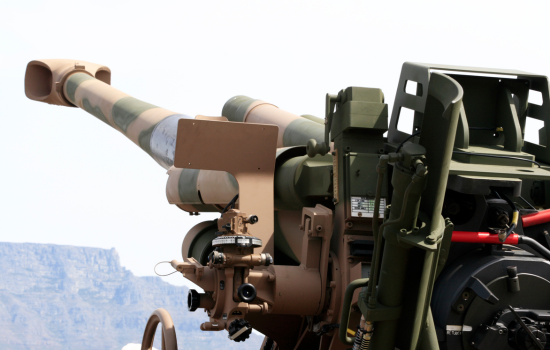Fatah-Hamas Relations – Rapprochement or Ready to Rumble?
By Gal Luft and Jonathan Schanzer
Reprinted with permission from Policywatch #693 December 19, 2002. Analysis of Near East policy from the scholars and associates of the Washington Institute
Parallel to the Palestinian armed struggle against Israel is a power struggle between Hamas and Fatah. Years of tensions have culminated in Gaza street clashes between the two organizations in recent weeks. An Egyptian-sponsored summit designed to achieve rapprochement between the two groups sputtered in Cairo last month, but talks are scheduled to resume on December 22. Against the backdrop of a floundering economy, weak public security, and a disintegrating central authority, Fatah’s attempts to rein in Hamas are crucial if the Palestinian Authority (PA) is to remain the ruling institution in the territories.
Proto-state of Affairs
The weakening of the PA’s institutions since September 2000 has sparked a surge in internecine violence and collaborator killings. Scores of Palestinians have been killed or injured by vigilantes. One journalist noted that when “collaboration fever spread across the [territories], many paramilitaries used it as an excuse to settle scores.” Other killings stemmed from political disagreements. The result, according to a Palestinian human rights group, is “a huge social crisis.”
The PA’s economy is in shambles as well. Its annual revenue has reportedly fallen by hundreds of millions of dollars, and it is plagued by corruption, productivity declines, unemployment, and a drop in foreign aid. Such financial woes have forced the PA to cut salaries and services.
Not surprisingly, lawlessness has emerged as a byproduct of the PA’s general disarray. In February 2002, for example, hundreds of Palestinians stormed a PA prison in Hebron and released inmates. During the same month, gunmen entered a military court and murdered three men who had just been convicted, then threw their bodies out into the street. In May, five masked men attacked Hassan Asfour, minister of nongovernmental organizations affairs, as he left his car.
Mounting Tension
Hamas has recognized the weakening of the central regime. In fact, a seized Hamas document suggested that the group may be working to exploit this opportunity. On December 17, PA minister of supplies Abu Ali Shahin echoed this fear, expressing concern that Hamas seeks “to weaken and marginalize the PA so it would replace the authority.”
Relations between the PA and Hamas have always been tense due to the latter’s rejection of any political dialogue with Israel and its criticism of PA corruption and bad governance. Moreover, Yasir Arafat has used considerable force against Hamas whenever he felt that the group’s terror activities harmed Palestinian interests. During the first two years of the current intifada, however, Fatah moved toward a militant stance similar to that of Hamas. This led to an unprecedented unity between the two factions; they cooperated militarily and even carried out joint attacks.
In recent months, however, Hamas has openly challenged the PA. In October, a group of Hamas gunmen kidnapped and killed the commander of Arafat’s riot police, Col. Rajeh Abu Lihyeh. Hamas refused to hand over the principal suspect and resisted attempts by the PA to storm the refugee camp where he lives. The incident triggered clashes leading to five deaths. In the wake of such tensions, Mohammed Dahlan, former head of the Gaza Preventive Security Force, stated, “For us this is a matter of life and death. . . . This is a test of the PA. Hamas or some members of it are trying to show that the PA no longer exists.”
More recently, a police officer and his son were killed in Hamas- Fatah clashes. Hamas issued a statement blaming Fatah, calling for the execution of the Fatah “culprits” as a “national and religious duty.” Fatah responded by raiding and firing at the houses of top Hamas leaders, including Abdel Aziz Rantisi and Ismail Abu Shanab. Hamas in turn deployed heavily armed militants outside their leaders’ homes, creating small enclaves in the Gaza Strip where Palestinian security forces could not pass. A subsequent Fatah leaflet warned Hamas that “anyone who wants to challenge [Fatah], his end will be in our hands, never mind who he is.”
Fatah’s Gambit
Clashes aside, Hamas and Fatah are also engaged in a battle for the hearts and minds of the Palestinian public. Elections are slated for January 20, although it seems increasingly unlikely that they will actually be held. If they proceed as scheduled, it is not yet clear whether Hamas would take part. Yet, Hamas is aggressively competing with Fatah for the support of the estimated 43 percent of Palestinians who are on the fence between the uncompromising strategy of Hamas and the more pragmatic alternative of Fatah (statistics provided by The Center for Palestine Research and Studies). Moreover, Hamas’s spiritual leader, Shaykh Ahmad Yasin (with 14 percent support), presents the only popular alternative to Arafat (35 percent support), since the second most popular Fatah leader, Marwan Barghouti (21 percent support), faces a long imprisonment in Israel.
The Fatah strategy, according to one official, is to convince Hamas to “accept the [PA] as the sole authority.” This scenario would be ideal for Arafat and his Fatah cadres in that it would allow them to pursue a path of intermittent violence without serious internal challenges. Coopting Hamas would likely enhance Fatah’s ability to manipulate terrorism by turning it on and off at Arafat’s discretion; such a strategy is seen as a way to exact further concessions from Israel at the negotiating table.
Tactics of Terror
Interestingly, a debate over the use of terror has surfaced recently between the two camps. Many Fatah leaders have reportedly become disillusioned with the tactic of attacking civilian targets inside Israel; they feel that it undermines the Palestinian struggle for statehood. Fatah is particularly concerned that a Hamas terror attack causing many Israeli casualties would trigger an overwhelming Israeli response likely to destroy the PA’s battered institutions and remove Arafat from the scene permanently. Of course, most Palestinians still support attacks against civilians, and Fatah itself is involved in such attacks through its military wing, the al-Aqsa Martyrs Brigades. Yet, unlike Hamas, al-Aqsa commanders are answerable to Arafat, and their terror activities can be suspended when their utility is in question.
For its part, Hamas is far less responsive to the expediencies of the political process. Unlike Fatah, whose operations are financed by PA money, Hamas funding comes from abroad; those monetary sources allow Hamas to pursue an independent agenda.
The Quartet’s Roadmap
Palestinian politics aside, Fatah strategy must be viewed in the context of the Quartet’s “roadmap” for Palestinian statehood and pressure by the Bush administration for regime change in the PA. Most Palestinians realize that this roadmap would eventually require them to confront and disarm Hamas, and that such measures would likely lead to internecine violence. Today, it appears they are willing to accept this challenge. A November poll showed that despite broad support for suicide attacks, some 56 percent of Palestinians support measures to prevent armed attacks against Israeli civilians inside the Green Line if an agreement on mutual cessation of violence is in place.
For Hamas, adopting the roadmap could mean disarmament, the blockage of overseas funding, and possibly the end of its existence as an active resistance group. Therefore, the group may be working to mobilize public support and amass more military hardware in the event that Fatah decides to move against it.
Negotiations in Cairo
At the November 8-12 summit in Cairo, Fatah asked Hamas to halt suicide bombings and attacks on civilians inside Israel for three months should Israel cease assassinating Hamas members. The hope was to extend the subsequent ceasefire as a precursor to peace. A halt on attacks would also encourage Israelis to elect Labor Party leadership when they go to the polls January , 2003.
Interestingly, this was not the first time Fatah and Hamas met in Cairo to iron out differences. In 1994, shortly after the PA assumed control of Gaza under the Oslo Accords, clashes were reported between Hamas and the PA. In 1995, PA officials met with Hamas representatives in Cairo to persuade them to join the PA, reduce violence, and back peace. Hamas rejected the PA’s overture, and PA security forces jailed hundreds of Hamas operatives soon thereafter.
At the start of the current intifada in September 2000, however, Arafat released many of these operatives. The Nationalist and Islamic Forces, a thirteen-member coalition composed of Fatah, Hamas, and Islamic Jihad, was even formed to facilitate coordination between the organizations. Within months, though, Hamas was once again seen as a threatening opposition. Arafat reportedly offered to form an alliance with Hamas in January 2001, but he was rebuffed. In June 2001, Hamas rejected Arafat’s offer to join a new Palestinian cabinet.
When the two groups met last month in Cairo, the goal was to improve ties, but they failed to achieve the desired rapprochement. Instead, the summit exacerbated tensions. Initially, the talks were to take place between Khaled Meshal, head of Hamas’s politburo, and Mahmoud Abbas (also known as Abu Mazen), Fatah’s second in command. In the end, Arafat lowered the profile of his delegation when he sent Zakaria alAgha, a member of the Palestine Liberation Organization Executive Committee, instead of Abbas. Hamas, in turn, yanked Meshal and sent a lesser functionary, Musa Abu Marzuq. Some analysts saw this jockeying as a sign of lingering animosity between the two organizations. Others interpreted it as an indication that an agreement is not a top priority for Arafat.
Either way, Palestinian officials reported that the talks had not produced “a lot of significant progress.” Indeed, Fatah made no visible gains in persuading Hamas to integrate into the Palestinian political system. Yet, the summit had another effect — namely, it bolstered Hamas’s standing, allowing the group to reassert its convictions (and perhaps its primacy) vis-e-vis Fatah. Indeed, shortly after the summit, Hamas leader Mahmud az- Zahhar asserted, “Fatah has opted to choose the political struggle, whereas Hamas advocates resistance.”
Approaching the Moment of Truth
The unrest in the Gaza Strip is a harbinger of what may come if the Palestinian leadership decides to fulfill the obligations of the Quartet roadmap and disarm radical groups like Hamas. To meet this challenge in the short run, the PA would require strong and effective security forces committed to fighting terror and corruption. It would also need broad international support and the cooperation of Israel. Yet, such cooperation will not be forthcoming unless PA security forces can demonstrate that their priorities have changed.
In order to weaken Hamas in the long run, the PA must make a genuine attempt to reestablish itself as the principal provider of social and economic services to the Palestinian people. Hamas derives power from the PA’s weakness and unpopularity. To reverse this, the PA must restore confidence in the central authority — confidence that began to crumble the moment Fatah chose violence over diplomacy more than two years ago.






